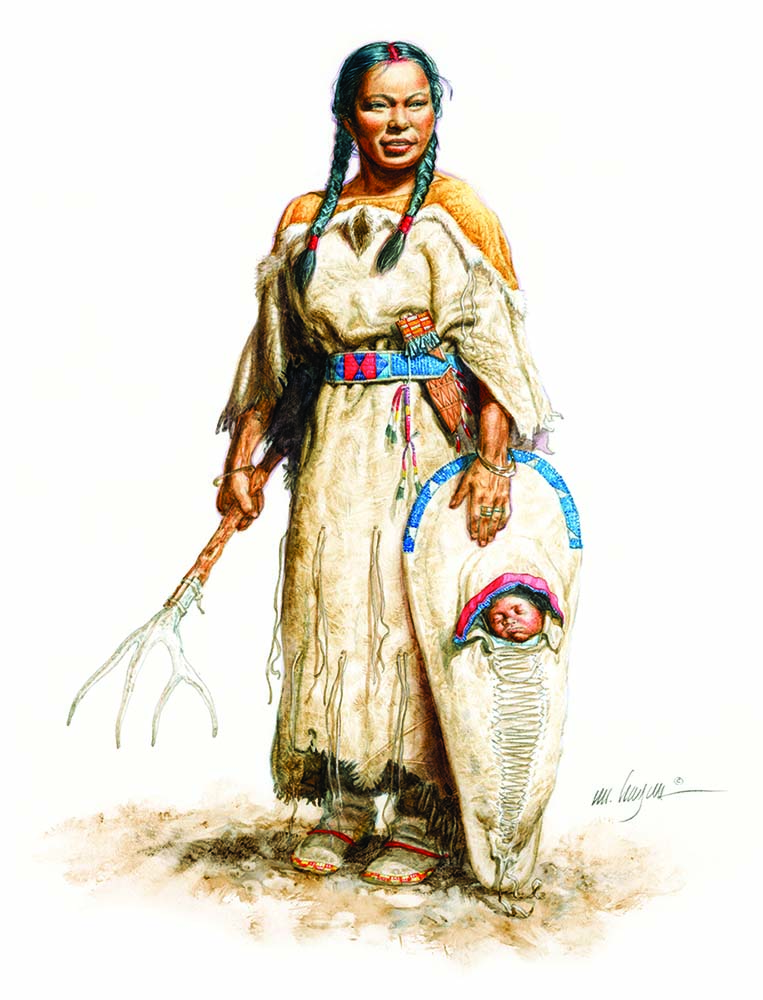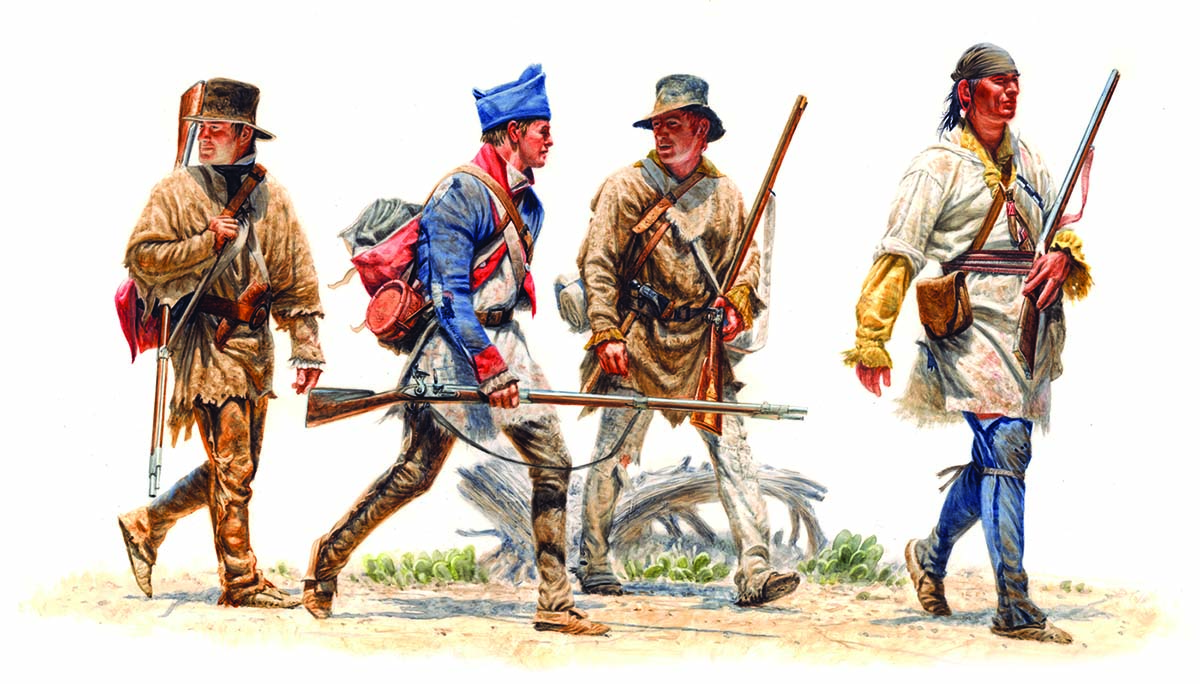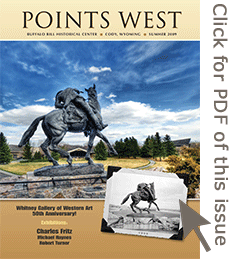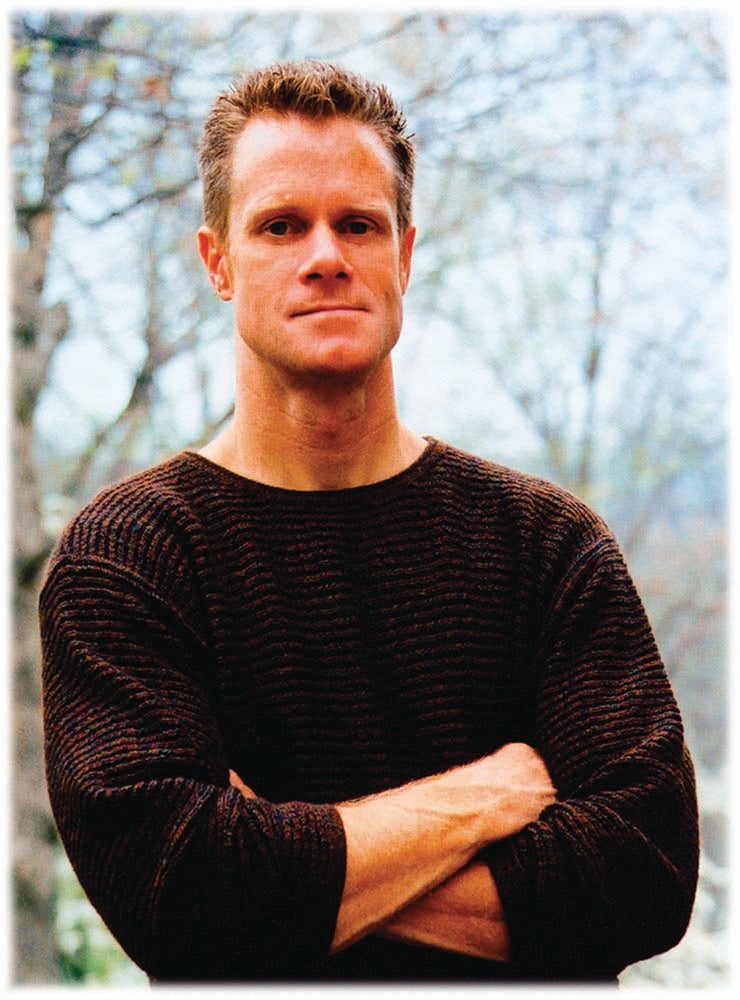Originally published in Points West magazine
Summer 2009
To the Western Ocean: Paintings by Michael Haynes
By Christine C. Brindza
In 2009, Michael Haynes’s To the Western Ocean: Paintings Depicting Members of the Lewis and Clark Expedition, a compelling display of portrait paintings of the famous explorers, was on display at the Buffalo Bill Center of the West (June 6 – August 30, 2009. Fourteen pieces were presented in conjunction with the exhibition An Artist with the Corps of Discovery: One Hundred Paintings Illustrating the Journals of Lewis and Clark, Featuring the Artwork of Charles Fritz. Haynes’s work of 1804–1806. [Ed. note: Click here to find out more about Fritz.]
Art and history often go hand in hand. However, Haynes, a history painter of the twenty-first century, takes these two elements and goes a step farther. Not only does he paint events and people of American history, he lives history as well. For the past fifteen years, he has been a part-time historic interpreter literally living the lifestyles of his artistic subjects. To accomplish this, he immerses himself in the roles of people from the past—from a horse wrangler to an extra on the movie sets of Glory, Sun of the Morning Star, and Far and Away. Consequently, he brings stringent historical accuracy to his work.
Haynes was originally commissioned in 2007 to create four vignettes of the most significant members of the Corps of Discovery. After that, he developed ten more pieces that complement the originals. In his To the Western Ocean series, he highlights Meriwether Lewis, William Clark, York, and Sacagawea. Lewis and Clark, the captains of the expedition, are the most well-known and celebrated of the Corps.

Sacagawea, the Indian woman who accompanied the expedition, is portrayed with her son, Jean Baptiste Charbonneau. She is recognized to be among the most artistically represented of all historic American women, though her physical features are unknown. Haynes created his own interpretation of this heroine after thorough research of her life.
York, Captain Clark’s black servant, is a lesser-known character who journeyed across the West with the expedition, but was no less noteworthy. He added diversity and an alternative perspective to the journey, but most significantly, he was treated as an equal during the trip.
These four main paintings, rendered with the closest historic details possible, were joined by ten images of other members of the Corps. Though these Corps members are not as famous, they still are an important part of the expedition. Haynes selected thirty of the explorers to depict, and broke them into groups. He determined each group by specific job such as cook, boatman, hunter, blacksmith, soldier, and other occupations. Interestingly, he painted the particular dress of each Corps member in relation to where they were along the route of the expedition. A visitor can see that if their clothing is new and fresh, it is early in their journey. If they wear hides, moccasins, or dirty, tattered clothing, they are far into the journey.

Haynes’s work also links current audiences with people of the past. His fundamental goal is to put “faces” to history. He portrays living humans, not just generic historic figures. It was difficult, but essential, for him to establish a personality for each individual and exhaust every source available to determine certain physical characteristics for each person. With little information available, it became quite an endeavor.
To respond to that challenge, Haynes constantly researches or experiences events that ultimately transfer into his art. His portraits of the Corps of Discovery, for example, are a combined effort of imagination and primary research. Both historians and artists alike scramble for clues to determine what kind of clothing the men wore, or how a particular person may have looked. By using journals, studying artifacts, military records, or literature of the time, these unknown aspects are roughly pieced together. Haynes diligently utilizes all resources possible before creating a finished product, taking weeks or months just to prepare for one painting.
About the Artist
Michael Haynes pursued an art degree at Auburn University in 1977 before working as a staff artist for the St. Louis Dispatch for about a year. Since then, he has been a freelance artist, working for Anheuser Busch, Civil War Times Illustrated, Time-Life, Miller Brewing Co., Warner Books, the National Park Service, and other companies across the United States. He won numerous awards from art shows across the country, including the ADDY (world’s largest advertising competition), the Communications Arts Show, and the Society of Illustrators. He has also recently become an author, collaborating with Bob Moore on Tailor Made, Trail Worn.
Several of Haynes’s paintings of uniformed figures were referenced for National Geographic’s Lewis and Clark IMAX production. Other Corps of Discovery paintings by Haynes can be found at the North Dakota Lewis and Clark Interpretive Center. The U.S. Army Corps of Engineers also commissioned Haynes to paint a series on the famous expedition. Haynes’s work hangs in the White House and in the Office of the Secretary of Defense. See more of his work at mhaynesart.com.
Post 308







